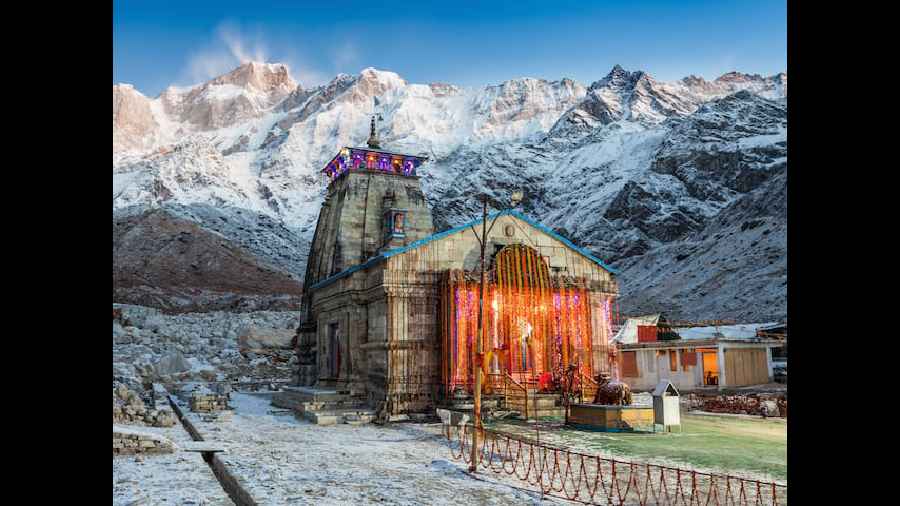The Union health ministry on Monday announced a plan to bolster healthcare and emergency services through ambulances, doctors and medicine-ferrying drones along the Char Dham route in Uttarakhand amid medical observations of an unusual spike in pilgrim deaths during 2022.
The planned infrastructure will include advanced ambulances and stroke vans, Union health minister Mansukh Mandaviya said after a meeting with Uttarakhand state health minister Dhan Singh Rawat who requested central support to address the health and emergency needs of pilgrims along the route.
Rawat expressed concern about the deaths of a number of pilgrims after health emergencies such as strokes along the strenuous route that connects four pilgrim sites — Badrinath, Kedarnath, Gangotri and Yamunotri.
Many of the casualties occurred among pilgrims who had long-standing chronic illnesses.
Doctors had in November 2022 flagged what they have described as an “unusual rise in mortality” among pilgrims on the Kedarnath segment during the summer months of 2022 — 120 deaths over 27 days, compared with 90, 102, and 112 deaths over six-month travel periods in 2019, 2018, and 2017.
“One possible explanation for the surge in mortality could have been an interplay between post-Covid-19 syndrome and high-altitude mountain sickness,” Nidhi Uniyal, professor of general medicine at the Government Doon Medical College, Dehradun, told The Telegraph.
Patients with long Covid19 symptoms or residual lung damage could face an increased risk of high-altitude pulmonary edema, a condition in which fluid leaks from blood vessels into the lung tissues and air sacs.
Uniyal and her physician colleague Yashendra Sethi, in a research report on the unusual mortality published in the Indian Journal of Respiratory Care, have underlined the need for pre-travel cardiorespiratory assessment for pilgrims.
Mandaviya said the ambulances and stroke vans would be stationed at different points along the route and postgraduate students from medical colleges from across the country would be deployed among the first responders.
“This experience will also act as a skill and capacity-building exercise for the PG students,” Mandaviya said.
He said drones would be used to deliver emergency medicines at high-altitude locations along the route. Badrinath, Kedarnath, Gangotri and Yamunotri are located over 10,000 feet in the Himalayas.
The All India Institute of Medical Sciences, Rishikesh, has started a drone service to deliver medicines.
The stroke vans would be equipped to initiate treatment on the road while the patients are being shifted to hospitals, while specialists at AIIMS, Rishikesh, the Doon Medical College, and other hospitals would help provide backend referral service.
The health and emergency services will also be complemented by efforts to inform travellers about weather conditions, pre-travel health screening, the importance of high-altitude acclimatisation, and the locations of health facilities.










